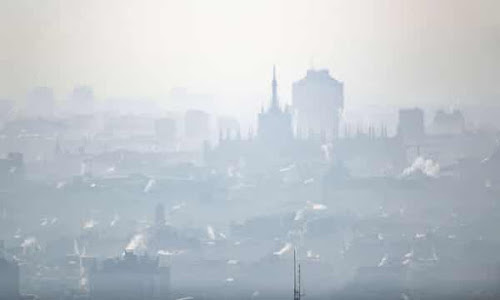New Research Shows Disproportionate Rate of Coronavirus Deaths in Polluted Areas. The analysis examined air pollution and coronavirus deaths in roughly 3,100 U.S. counties and found a close correlation between levels of hazardous pollutants and the per-capita death rate from COVID-19.
Because the virus affects the respiratory system, researchers have rushed to study the potential association between mortality rates and air pollution. Early studies, including one looking at the particulate matter — distinct from HAPs, but often found with them — have suggested a link.
Cancer Alley is the industrial corridor that runs from Baton Rouge to New Orleans across the Mississippi River and is dubbed "Cancer Alley" because of potential health threats associated with local chemical pollution. The case rate is very significant in this area.
According to a recent study, coronavirus patients are three times more likely to die of the disease in areas with polluted air compared to those with clean air. The authors conclude that air pollution, which affects Americans of color overwhelmingly, would push COVID higher (19 percent of all deaths). Researchers say that people in places where air pollution is worse would have higher rates of COVIDs than those with clean air. African Americans and other low-income communities living in highly contaminated areas are exposed to higher levels of PM 2.5 particulate matter compared with less polluted areas, accompanied by homestays.
The finding of the US Centers for Disease Control and Prevention ( CDC) is especially important because air pollution can worsen basic health problems which increase the likelihood of COVID-19 dying. This is consistent with a recent Harvard study that indicates a strong correlation between the number of people with Covid19 infection and the risk of death from the infection. People live in areas with high air pollution are also at a higher risk of COIDV-19 dying compared to those who do not, and this is also the case for people living in low-income areas in the US.
There is evidence to suggest that air pollution may contribute to the severity of COVID-19 outcomes and lead to a higher mortality rate in polluted areas. Several studies have explored the association between air pollution and COVID-19, highlighting potential links between exposure to pollution and increased vulnerability to respiratory infections.
Air pollution can weaken respiratory and immune systems, making individuals more susceptible to respiratory illnesses, including COVID-19. It may also exacerbate existing respiratory conditions, such as asthma or chronic obstructive pulmonary disease (COPD), which can increase the risk of severe COVID-19 outcomes.
However, it's important to note that COVID-19 outcomes are influenced by multiple factors, including age, underlying health conditions, access to healthcare, socioeconomic status, and population density. Disentangling the specific contribution of air pollution to COVID-19 mortality rates can be challenging.
To assess the impact of air pollution on COVID-19 outcomes in specific areas, it is necessary to analyze localized data and conduct rigorous epidemiological studies. These studies would consider confounding factors and control for other variables that may influence COVID-19 mortality rates.

